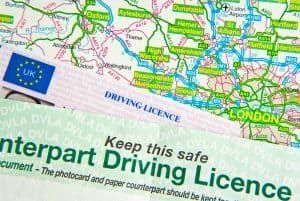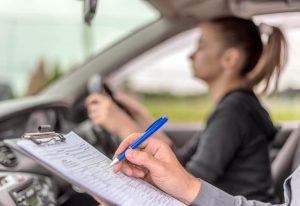Stopping & Braking Distances: 6 Theory Test Prep Facts
More help for you
From a safety perspective, braking and stopping distances are probably the most crucial things you need to learn in advance of your theory test.
However, your knowledge shouldn’t just be confined to metres and feet. It is important to understand the factors which can affect the distance that it will take you to come to a complete stop safely. Here is everything you need to know about stopping & braking distances to prepare you for the theory test!
The Difference between Braking and Stopping Distance
Braking distance is the term used to describe the length you will have travelled as soon as your foot begins pressing down on the pedal. However, before this process can begin, you will have a thinking distance -- and this accounts for the time you’ll take before realising there’s a hazard ahead that requires you to slow down. When braking distance and thinking distance are combined, the total is your stopping distance.
What Are the Average Thinking Distances?
This is going to depend on the speed you’re travelling at. When you’re abiding by the limit in a 20mph zone, you normally will have travelled 6m (roughly 20ft) before you make the decision to brake.
For every 10mph above this, your thinking distance rises in increments of 3m (approximately 10ft). Therefore, in a 30mph zone it will be 9m, in a 40mph zone it will be 12m, and so on and so forth.
Now, Add on the Braking
On top of the thinking distances we have just discussed, it’s time to factor in your braking distance. At 20mph and in good conditions, your car would take 6m to stop once the brakes are applied -- creating a total of 12m.
At 30mph, your braking distance increases to 14m (a 23m total when thinking distance is included). Your braking distance is 24m at 40mph, 38m at 50mph, 55m at 60mph, and a whopping 75m at 70mph.
It’s a good idea to think about this in car lengths. At 70mph -- the legal limit on a motorway -- it will take you 24 car lengths to come to a complete stop. Keeping your distance from the vehicles in front of you is crucial, as it will allow you plenty of time to respond and slow down if they suddenly have to apply their brakes. Here are UK Highway Code stopping distances you will need for the test:
6 Factors to Consider
All of the distances that we’ve talked about so far can be found in further detail in your copy of The Highway Code. But there’s one thing we have to stress: these figures are based on road conditions being good, and the following factors can prolong your stopping distances further if the right precautions aren’t taken.
- 1
Your Brakes
Unsurprisingly, the condition of your brakes will determine whether you can achieve optimal braking distances. You need to keep them well maintained by ensuring that the friction material on the brake pad doesn’t wear down over time. Driving through deep water can also cause moisture which will have a detrimental impact on performance. The following video from one of car manufacturers speaks about brakes condition warning signals.
- 2
Your Tyres
Whether underinflated or overinflated, the pressure of your tyres can affect the amount of traction your car has. You should make sure that you check the tyre pressure on a monthly basis and ensure you’re complying with the recommendations made in your car’s manual. Make sure you know the law surrounding tyre tread, too. You will need to change any wheels which have a depth of 1.6mm or less, as these tyres are going to be unsafe and could double your usual stopping distance even in good conditions.
- 3
The Weather
A good rule of thumb to bear in mind is that your usual stopping distances will double if the road is wet, and be 10 times greater than normal if you’re driving on icy surfaces. Whenever out and about in poor conditions, don’t be afraid to take your time and make every effort to maximise your visibility.
- 4
Being Distracted
In-car technology, such as your sat nav and even your hands-free mobile, can divert your attention away from the road ahead of you -- stealing precious seconds of thinking time and causing you to brake more erratically when an immediate hazard lies ahead.

A study by Transport Research Laboratory reveals shocking delays in reaction time - 5
Being under the Influence of Alcohol
Your reaction times slow considerably when you drink alcohol, and if a pedestrian was to begin crossing the road unexpectedly, it could take an extra few seconds before you begin an emergency stop.
- 6
Exhaustion
You should always take regular breaks when you are driving long distances, as tiredness has a severe effect on your ability to make fast decisions. Current recommendations include trying to share driving responsibilities if you’re on a road trip with family and friends. Plus, if you’re on a long journey, do try and pull over into a service station for a 15-minute break every two hours or so. This will give you the chance to refresh yourself and stay alert. Here are some more tips to avoid drowsy driving:
To practise theory questions about stopping distances, make sure you head to TopTests.co.uk.



